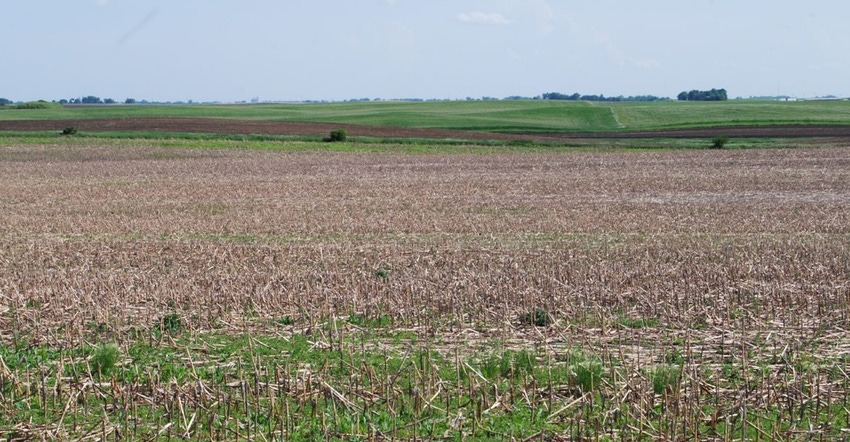July 2, 2019

Farmers who plant cover crops on prevented planting acres will be allowed to hay, graze or chop those fields earlier than Nov. 1 this year. On June 20, USDA’s Risk Management Agency announced this change in the rules. Previously, farmers were not allowed to hay or graze prevented planting acres until after Nov. 1, but that date has been moved up to Sept. 1 for 2019.
In addition to moving the date from Nov. 1 to Sept. 1 for this year, RMA also said silage, haylage and baleage will be treated the same as haying and grazing. Farmers will be able to hay, graze or cut cover crops for silage, haylage or baleage on prevented plant acres on or after Sept. 1 and still maintain eligibility for their full 2019 prevented planting indemnity from crop insurance.
Watch the calendar. These changes have been made for 2019 only, and farmers still can’t harvest grain or seed from cover crops on prevented plant acres. Contact your crop insurance provider if you have specific questions on coverage and communicate with them regarding your intended plans.
Other considerations for forage
This is a game-changer for farmers looking to get some forage value out of a cover crop planted on prevented planting acres. Earlier this spring, ISU Extension agronomists posted an article on Cover Crop Options on Prevented Planting Fields and one on Forage Options With Prevented Planting Fields. With RMA making these June 20 changes to crop insurance regulations along with looking at the extended forecast of a cooler-than-normal summer, there are some additional considerations for farmers regarding cover crops with prevented planting fields from a forage perspective.
ISU Extension field agronomists Rebecca Vittetoe, Meaghan Anderson and Brian Lang offer the following observations and recommendations.
For farmers looking to maximize tonnage, planting corn as a cover crop and then harvesting for silage will likely give you more tonnage, especially if summer is cooler than normal. Warm-season grasses like millets, sorghum and sorghum-sudan require more heat than corn. And consequently, if we don’t get enough heat, they won’t grow very well.
Follow herbicide label restrictions
If you are planning on using a cover crop for forage, pay attention to herbicide label restrictions for herbicides either applied to those fields or what you might plan to apply for crop rotations and grazing or forage. These restrictions must be followed if you plan to use the cover crop as a forage source. If a cover crop species is not specifically listed on the herbicide label, it falls under the “all other crops” category on the label.
In addition to paying attention to herbicide labels, double-check seed treatment labels if you use leftover or unplanted soybeans, or corn seed as a cover crop on prevent plant acres for any forage or grazing restrictions. For instance, the ILeVo labels states that soybeans treated with ILeVo should not be grazed or used as hay. A helpful resource to double-check pesticide labels or seed treatment labels is cdms.net.
It’s important to keep an eye on the calendar. “You can use the cover crop you have on prevented planting acres as silage, haylage, baleage, or you can graze it,” says Amanda DeJong, state director for USDA’s Farm Service Agency in Iowa. “But keep in mind that Sept. 1 date — it is very important. If you harvest or graze the cover crop from prevented planting acres before Sept. 1, your prevented planting indemnity payment from your crop insurance company will be reduced by 65%.”
Planting, using corn as cover crop
FSA county offices are getting another question from farmers: Can I plant corn as a cover crop? Will it qualify according to RMA rules for crop insurance on prevent planting acres? Can I plant it at a very high population to get more silage when I harvest it?
“We tell producers they need to consult their local ag expert,” DeJong says. “That could be an ISU Extension agronomist or a certified crop adviser or their local NRCS office. In general, yes, corn can be planted as a cover crop, as long as it’s recommended by a local agronomy expert and if done at appropriate seeding rates to provide ground cover to control erosion this summer.”
Also, remember a corn cover crop is not allowed to be harvested for grain, she adds. “But it can be harvested for silage. Talk to Extension and NRCS locally to get advice on what you plan to do. We want to make sure you retain your eligibility to receive your prevented planting payment.”
About the Author(s)
You May Also Like






